Enhancing natural grazing, a key component of rewilding, can deliver multiple benefits. The arrival of a second herd of Tauros in the Iberian Highlands rewilding landscape in Spain is therefore good news for people and wildlife.
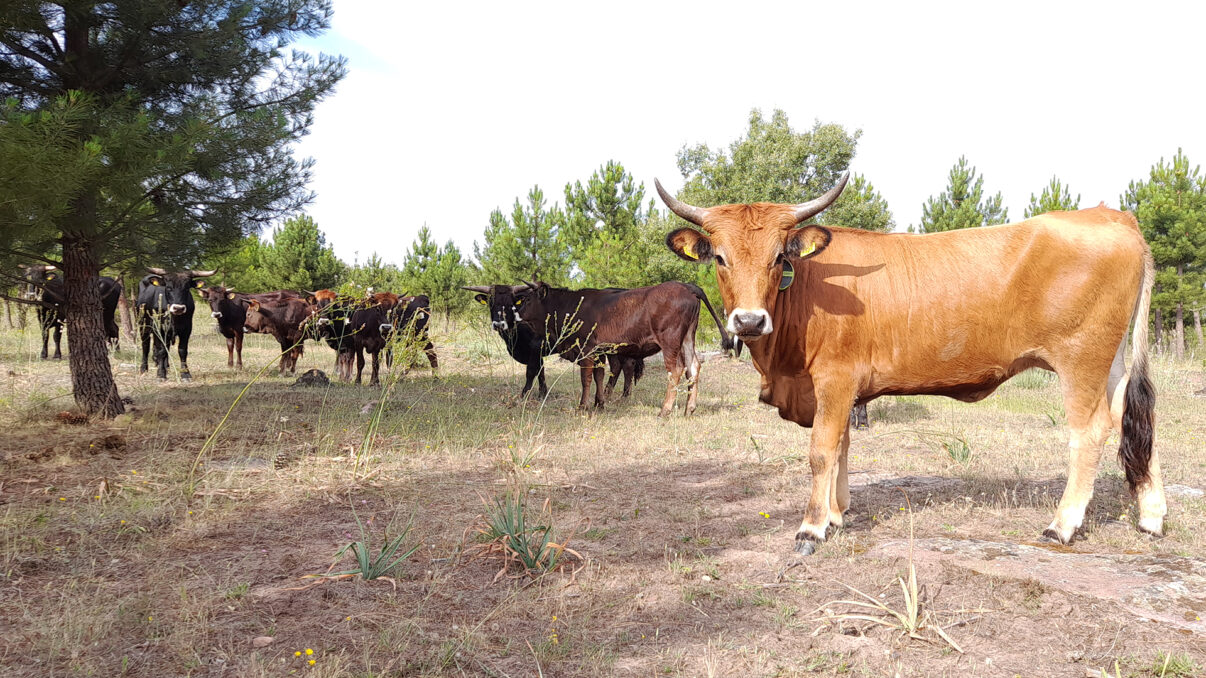
Enhanced grazing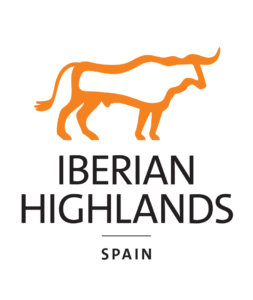
A herd of 10 Tauros – a bovine specifically bred to perform a similar ecological role as the long extinct aurochs – has just been released in the Iberian Highlands rewilding landscape in Spain. The animals have been released in the Dehesa de Solanillos woodland, a forested area located close to the village of Mazarete in Guadalajara Province, in the Upper Tagus (Alto Tajo) region.
By enhancing natural grazing, these impressive herbivores will help to regenerate the forest – which was devastated by a catastrophic wildfire in 2005 – and increase its biodiversity. Through their grazing and trampling, the Tauros will open up and introduce more light to the woodland, allowing a wider range of plant and animal species to thrive. This will gradually create a more varied, higher biodiversity forest landscape.
“This is a particularly good time for the Tauros to contribute to landscape rewilding because the forest is in a stage of natural regeneration,” explains Marina Mònico, Rewilding Spain’s rewilding officer. “As keystone herbivores, the animals will help to control the spread of dominant shrub species. By eating this easily combustible vegetation, the animals will also help to reduce the risk of catastrophic wildfire – the risk of which is increasing with climate change – while their dung will attract numerous insects and increase soil fertility.”
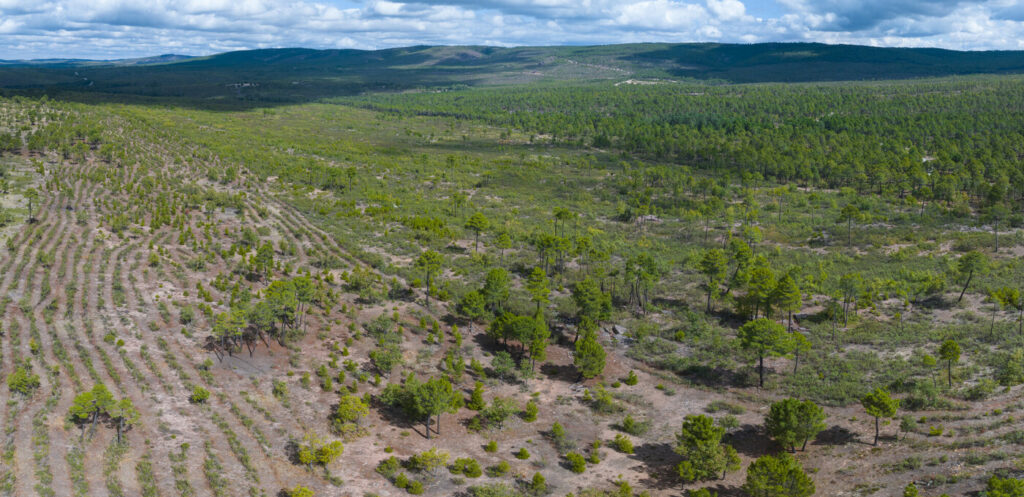
Complementary impact
On arrival at Mazarete, the eight female and two male Tauros spent three weeks in an enclosure adapting to their new habitat. During this time the Rewilding Spain team evaluated their health and fitted two with GPS transmitters, which will allow the movement and behaviour of the animals to be monitored.
Having now been released from their acclimatisation enclosure, the Tauros are able to move around an area of nearly 1500 hectares. They share this habitat with a herd of Serrano horses, which have been living here for more than 18 months, following their own release by the Rewilding Spain team. In terms of grazing impact, both species will complement each other, as they interact with the landscape in different ways and can eat a different range of plants.
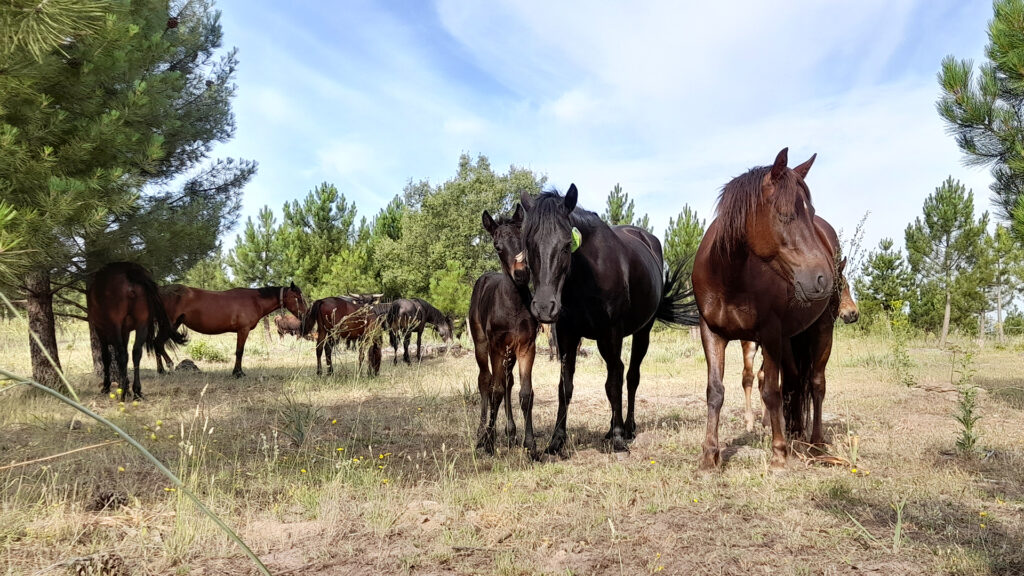
Positive for people
In addition to performing a critical ecological function, the Tauros and Serrano horses will also provide economic benefits to local communities. Two new jobs have already been created – one herd manager and one maintenance/field worker – with two young professionals living in the villages of Alcolea del Pinar and Mazarete now taken on.
The Rewilding Spain team are planning to design and install signposted trails, as well as establish guided tours, to support the development of nature-based tourism and environmental education in and around the woodland. This will help to familiarise growing numbers of people with the value of natural grazing and the role of Tauros and semi-wild horses in rewilding.
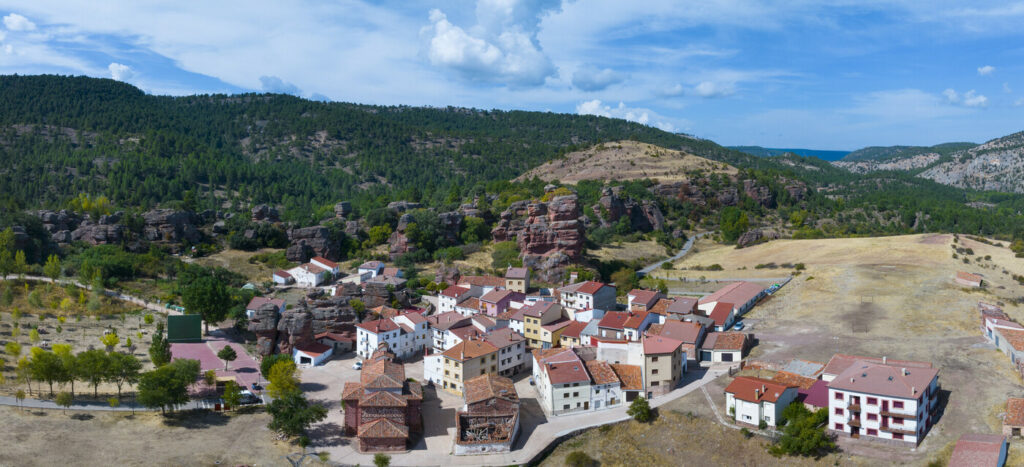
Why Tauros?
Prior to this release the Rewilding Spain team received training on Tauros behaviour from the Netherlands-based Taurus Foundation. A partner of Rewilding Europe, the Dutch NGO is dedicated to creating a substitute for the extinct aurochs – a wild bovine that was the ancestor of all domesticated cattle breeds – which was a keystone species within many continental ecosystems before it was hunted out of existence. Tauros can reprise the essential role that the aurochs played by thriving in contemporary habitats in need of enhanced natural grazing.
The Tauros is not a species, but a mix of bovine breeds selected to produce a resilient animal that is well adapted to living in the wild. Mixing breeds to enhance genetics and capacity to survive in the wild is preferable to using “pure” cattle breeds that fit an artificial standard based simply on appearance.
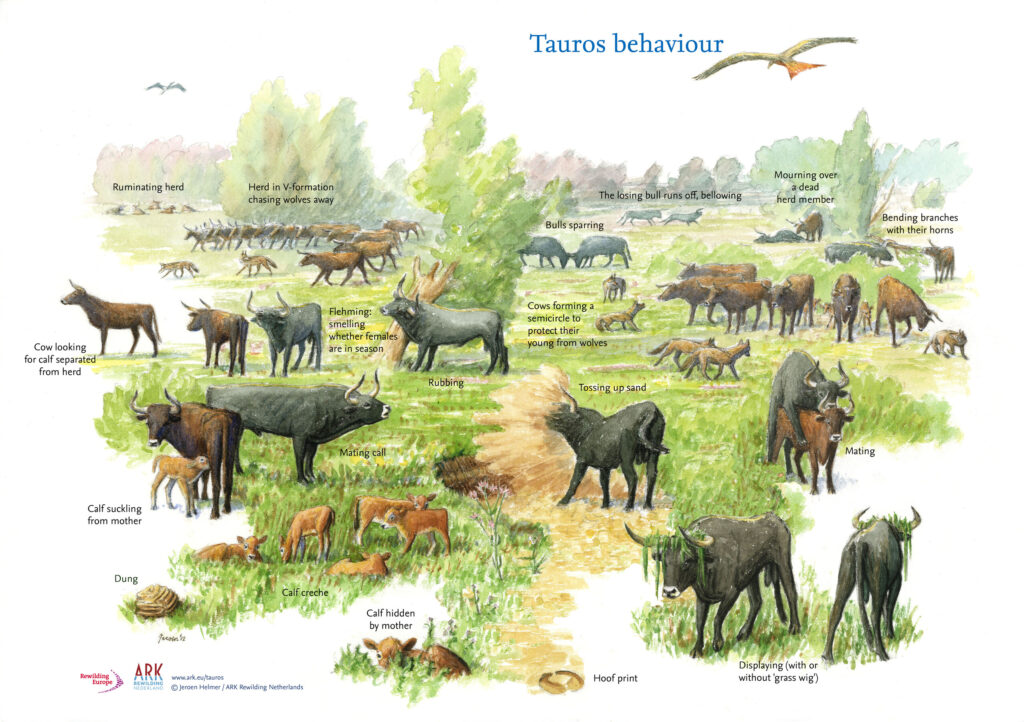
Future focus
Over the next three years, Rewilding Spain is aiming to grow the combined herd of Tauros and Serrano horses in the Dehesa de Solanillos woodland so that it numbers around 100 animals. “The landscape has the capacity to support this number of herbivores, which would generate the scale of positive ecological impact that we are aiming for,” explains Rewilding Spain team leader Pablo Schapira.
The Tauros herd that has just been released in the Alto Tajo area is the second group of such animals to arrive in the Iberian Highlands as a result of Rewilding Spain’s efforts to support nature recovery. As part of the rewilding vision for the entire landscape, the first herd is thriving near the village of Frías de Albarracín, in Teruel Province, where Rewilding Spain has partnered with La Maleza Wildlife Park to manage the herbivores.
With financial assistance from Rewilding Europe Capital, Rewilding Europe’s enterprise loan facility, the park has recently launched 4 x 4-based safaris which allow visitors to view Tauros and semi-wild horses up close.
The release of Tauros by Rewilding Spain is carried out in partnership with Rewilding Europe, and with the financial support of the Endangered Landscapes Programme and the Cartier for Nature Foundation.
